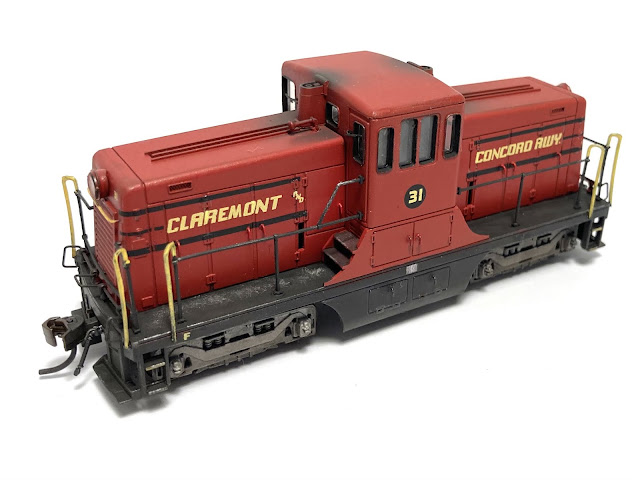Claremont and Concord: 44t clean yet used...
Getting the balance right on a restrained weathering where you’re trying to depict a well loved locomotive, looked after by its crew yet bearing those signs of a long and hard working existence is definitely an art form, and one I continue to try and master...My model of Claremont and Concord number 31 is the latest of my efforts, practicing and growing my art of weathering, honing those skills practiced on large and small models from all corners of the world. This model doesn’t try any new techniques, rather it tries to take all I’ve learnt and finesse and adjust these with just the lightest of touches. These are all within the reach of every modeller, with patience and practice.
In the briefest of description, it is simply a combination of washes, airbrushing and dry brushing. That overly simplifies mind, and perhaps at least a description of colour and approach might be of further value, but I hope shows there is nothing of mystery in weathering, plenty of practice and copying a photo, attempting to recreate what you see, but more, what you feel about the prototype.
In the briefest of description, it is simply a combination of washes, airbrushing and dry brushing. That overly simplifies mind, and perhaps at least a description of colour and approach might be of further value, but I hope shows there is nothing of mystery in weathering, plenty of practice and copying a photo, attempting to recreate what you see, but more, what you feel about the prototype.
I used a light grey panel line wash on the chassis, and a black wash on the truck frames. These were from Humbrol’s new enamel washes, I’m getting the hang of controlling these, especially useful for this sort of panel line washes where you want a consistent colour and concentration. Once they begin to dry you can tidy up the panel lines with a brush moistened with white spirit. I then mixed my usual Humbrol 33 and 98 to make my own wash and applied this to the footplate, footboards and pipe work, naturally varying it as I progress... mixing just a small amount on my pallette as I go, almost deliberately forcing a remix and the subtle, natural variation that brings.
Once dry, it’s the black art of airbrushing... or not, actually just another tool and one to master. I’m confident with my setup when using it for painting but I still find using it for weathering an un-natural skill... one to keep working on... I mixed two thin black brown washes, one darker than the other, using Humbrol metal cote 27004, satin 133 and Matt 245. The lighter shade was wafted gently over the model and from below, concentrating on the lower edges and footboards. Switching to the darker shade doesn’t need a complete clean up, just run some enamel thinners through the brush and then reload... this was applied from above, very gently, over the two exhausts. This is where I’m still learning, and I’m not entirely happy with the result, being a little heavier on the top of the bonnet than I’d like (I probably sprayed from slightly too far away allowing it to spread out)... However its soft edge is intoxicatingly good, I love the contrast it brings to the light sheen along the top edge of the bonnet... I set the model aside to dry for a few hours, to allow gentle handling, before moving on to the final stage.
This is dry brushing, I only ever use gunmetal, Humbrol 53, and two basic techniques. One where you run a brush along the edges of surfaces, like the corner step treads or sides of the chassis, the second where you lightly stipple a flat surface as I have the walkways along the edge of the bonnet. This can hilight these edges, giving the finish more ‘pop’, but it also shows that gentle wear, that lovingly worn finish, a human touch, paint wearing through use, not chipped, rusty or damaged... just worn through use, like the feel of your favourite hand tools. This final stage really transforms the model... number 31 was bright enough before hand and perhaps benefitted less, but as another example, a Guilford GP40 in dark grey was given the same treatment and it has really lifted the finish, given the dull and weathered look a life, that same human touch, and one I haven’t found a way of achieving any other way...
I hope you agree that these simple human processes have transformed the model, and I’m a little closer again to that finish I yearn to perfect. I love practicing techniques, and working on these North American models is making me approach the same methods with fresh energy. If you’d like me to breathe some life into your own models, I’m happy to give you a personal proposal. Get in touch, in the meantime more soon...



Perfect! Nicely done as always James...
ReplyDeleteThanks Jeff... it's funny, I took a photo on Kinross and it just looked wrong, but placing it on Pont-y-dulais it looks right. I think that was intentional. If/when I build Claremont Paper I will be going for the same palette as PyD, green and lush, slightly damp, darker colours than Kinross's bright dry overcast summer day.
Delete